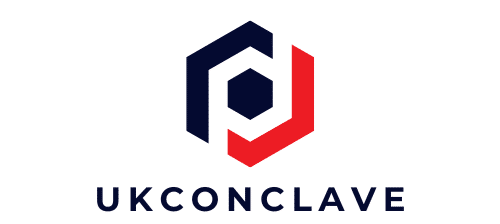What Are the Best Customer Feedback Tools for UK E-commerce Sites to Improve UX?

In the competitive landscape of the UK e-commerce scene, customer feedback is not just an option, but a necessity. As a business, your customers are your compass, guiding you on what to improve, what to change and what to keep doing. Their experience on your website is essential to your success. But how do you gather their insights? What tools can help you survey your users’ experiences? This article will delve into the best tools available to collect customer feedback in a way that will help you improve the user experience on your ecommerce site.
Power of Customer Feedback
Before we delve into the specifics of the tools, let’s take a moment to reiterate the importance of customer feedback. Feedback from your customers provides a direct window into their experiences, preferences and concerns when interacting with your product or website. It’s their voice and perspective that you can use to enhance your product based on their needs.
Avez-vous vu cela : Trading across calais border in customs compliance explained
Analysts often refer to this feedback as the ‘voice of the customer’. It’s a term used to describe the in-depth process of capturing a customer’s expectations, preferences and dislikes. By paying close attention to this voice, you can identify areas where your e-commerce site excels or needs improvement.
A well-executed user feedback strategy can lead to significant improvements in customer satisfaction and retention, ultimately impacting your bottom line. It also fosters a sense of engagement and loyalty, as customers appreciate when their opinions are taken into consideration.
A découvrir également : How Can English Vineyards Use Climate Data to Improve Grape Quality and Yields?
Tools for Gathering User Feedback
Now that we understand the importance of customer feedback, let’s explore the various tools available to capture this valuable information. For e-commerce sites, there are a variety of user feedback tools that you can use to gather data relating to customer experience. The best tools offer features like surveys, feedback forms, and user testing, giving you a comprehensive view of your customers’ experiences.
-
SurveyMonkey: This is perhaps one of the most well-known survey tools available. With its user-friendly interface and broad range of question types, SurveyMonkey simplifies the process of creating comprehensive surveys. It offers both free and premium options, with the latter providing more advanced features, such as data analysis, text analysis, and custom branding.
-
Hotjar: This tool provides a visual representation of how customers are interacting with your site. It uses heatmaps to show where users click, move and scroll on your pages. You can also record user sessions to watch how customers navigate through your site, giving you insight into potential UX issues.
-
UserTesting: UserTesting is a platform that provides real-time feedback from users interacting with your site. It allows you to choose your own testers or use their pool of pre-screened participants. You can then watch videos of these users navigating your site while they voice their thoughts out loud.
-
Google Forms: As a free tool, Google Forms is a decent option for small businesses or those just beginning to gather customer feedback. It allows you to create simple surveys and questionnaires, which you can share via a link or embed on your site.
Tailoring Your Feedback Strategy
A critical aspect of gathering user feedback that should not be overlooked is the importance of tailoring your survey or feedback form to your specific needs. No two e-commerce sites are the same, and what works for one may not work for another. By taking the time to customise your user feedback tools and strategies, you are much more likely to gain insights that are relevant and actionable.
When customising your surveys or feedback forms, consider the specific information you are looking to gather. Are you interested in overall satisfaction, or are you more focused on usability or site navigation? Perhaps you want feedback on a specific product or service. The nature of your questions will vary based on these goals.
Also, consider your customers’ journey on your site. At what points in this journey are you asking for feedback? Are there more topical or relevant times to request input? By strategically placing feedback prompts, you can increase the chances of users participating in your surveys.
Analysing and Implementing User Feedback
Once you have gathered feedback using these tools, the next step is to analyse the data and implement changes based on your findings. It’s vital to approach this process systematically and objectively, focusing on trends and significant points rather than isolated comments.
Remember, the goal of gathering feedback is not to make every single customer happy, but to improve the overall user experience on your site. Look for trends in the feedback. If multiple customers are having the same issue or making the same suggestion, it warrants attention.
Making changes based on feedback should be a dynamic and ongoing process. E-commerce is a rapidly evolving field, and user expectations change over time. Therefore, continuous feedback collection and analysis should be an integral part of your strategy.
In conclusion, customer feedback is a treasure trove of information that can help you achieve your business goals. The tools highlighted in this article are some of the best available to UK e-commerce businesses, but the most effective tool will depend on your specific needs. It’s crucial to choose a tool that suits your business model, customer base, and technical capabilities. By leveraging these resources and consistently acting on user feedback, you can continually optimise your site’s user experience and build a strong relationship with your customers.
Utilising Social Media and Email for User Feedback
In today’s digital age, social media and email are powerful tools that can be harnessed for gathering user feedback. Both platforms offer a direct line of communication with your customers, making them ideal for collecting insights on user experience.
Social media platforms, such as Facebook, Twitter, Instagram, and LinkedIn, are regularly frequented by your customers. These platforms provide a space for customers to voice their opinions and experiences in real time. By monitoring your company’s social media activity and mentions, you can gain an unfiltered view of your customers’ perceptions of your e-commerce site.
It’s also worth considering the use of direct outreach via email to gather customer feedback. Email surveys can be particularly effective, as they can be tailored to ask specific questions about the user experience on your ecommerce site. Moreover, you can segment your email list based on certain criteria, such as recent purchases or website activity, to make your feedback collection more targeted.
However, as with any feedback tool, it’s important to use best practices to ensure you’re getting the most out of these platforms. Remember to respond promptly to feedback, whether it’s a complaint or a compliment. Showing your customers that you value their input and are committed to improving their experience can greatly enhance customer satisfaction and loyalty.
Using Net Promoter Score (NPS) to Measure Customer Satisfaction
The Net Promoter Score (NPS) is a popular tool used to measure customer satisfaction and loyalty. It’s simple, yet robust, providing insights into how likely your customers are to recommend your ecommerce site to others.
To calculate your NPS, you’ll ask your customers a single question: "On a scale of 0-10, how likely are you to recommend us to a friend or colleague?" The answers are then divided into three categories: promoters (9-10), passives (7-8), and detractors (0-6). The NPS is the percentage of promoters minus the percentage of detractors.
Your e-commerce site’s NPS can provide useful insights into your customers’ overall experience. A high NPS indicates that your customers are happy with their experience and are likely to recommend your site, while a low NPS suggests there are areas for improvement.
Remember, NPS is just one metric, and it should be used in conjunction with other feedback tools to gain a comprehensive understanding of the user experience. To get the most out of this tool, follow up with customers to understand the reasons behind their score, particularly the detractors. Their feedback can provide invaluable insights into areas that need improvement.
Conclusion: The Power of Customer Feedback
In the realm of UK e-commerce, customer feedback is a pivotal factor that drives success. It is the compass that guides businesses towards growth and improvement. It is the voice of your customers, echoing their experiences, preferences, and concerns. It is, ultimately, the key to unlocking a superior user experience on your ecommerce site.
By leveraging a variety of feedback tools, such as SurveyMonkey, Hotjar, UserTesting, Google Forms, social media, email, and Net Promoter Score, you can capture insights and trends from your customers. Remember, customization and strategy are fundamental to the feedback collection process. Tailoring your approach and strategically placing feedback prompts can greatly enhance your feedback quality and quantity.
Once feedback is gathered, it needs to be systematically analysed and acted upon. Not every piece of feedback will warrant change, but notable trends and recurring concerns should be addressed to continuously improve the user experience.
In essence, the best practices for collecting and acting on customer feedback involve a combination of the right tools, a tailored strategy, and a commitment to customer satisfaction. By mastering these elements, you can create a superior user experience that powers your e-commerce site’s growth and success. Remember, your customers’ opinions are not just feedback; they are your roadmap to success.
